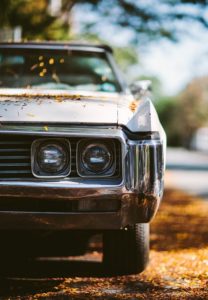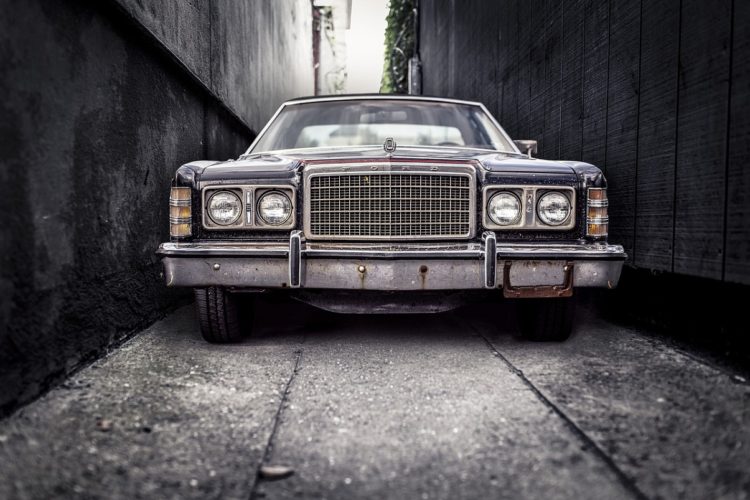When you think about protecting your car from oxidation, you’re probably mostly concerned with preventing the metal from rusting. The truth is, though, plastic can oxidize, too, and while this damage tends to be less significant long-term, it can still impact the look and performance of your vehicle. Even if you’ve guarded your car against rust, you might not know how to keep headlights from oxidizing.
The plastic used for headlights is built for strength but is susceptible to damage from the elements. Most headlights are covered with a protective film to stop this, but that film wears away over time, leaving your headlights exposed. Once they’re damaged, the brightness and color of the beam will suffer.
There are products out there for restoring headlights, >>>find a list of best products to restore headlights here but it’s even better if you can stop them from taking damage in the first place. Check out the tips below to learn how you can keep your headlights clear and bright in the long term.
What causes yellowed, cloudy headlights?
Headlight oxidation is caused by exposure to the elements. Sunlight is the biggest culprit. Over time, UV radiation from the sunlight causes tiny cracks to appear in the plastic of the headlamp, which blocks some of the light from the bulb, dimming the beam.
Moisture can also be your headlights’ enemy. Headlight covers aren’t completely air-tight. There are small vents, usually along the top and bottom. If these weren’t there, the air heated trapped between the cover and the bulb would have nowhere to go and the pressure difference could crack the covers. Because they’re not completely sealed, though, moisture from the air can be trapped inside the headlight, affecting how the light shines through it.
Headlights can also take damage from road debris and environmental pollutants. Oil and dust from the road can splash up onto the headlights, leaving behind a yellowish, opaque film that impairs visibility. This can be cleaned off fairly easily, though, and doesn’t cause the same kind of lasting damage as UV rays. (>>> Learn how to clean the inside of headlight)
Tip 1: Be smart about where you park.
Most cars spend a lot more time parked than they do out on the road. You can prevent a lot of headlight damage by parking somewhere that they’ll be protected. Ideally, you should park in a cool, dry place that’s out of direct sunlight. This is easy if you have your own garage or carport, but can be trickier if you rely on public parking options.
Public parking garages are an effective option for keeping your car out of the sun, but remember that moisture can play a role, too. If the air in the parking garage is damp, more condensation will collect on the inside of the lamp. This will also affect you night-time driving visibility because the moisture refracts the light, making the beam less focused.
If you have no choice but to park your car out in the open, consider buying a protective cover. They can be a bit of a hassle to put on and remove, but they’ll protect your whole car—not just your headlights—from damage when you’re not around.
Tip 2: Use the right products to clean your headlights.
 Just like every part of your car, your headlights will need periodic cleaning. Even if they don’t look dirty to the naked eye, you should wash your headlights when you wash the rest of your car. That layer of road grime that we mentioned above can build up so slowly you don’t notice the change, and can impair your visibility more than the damage from UV rays.
Just like every part of your car, your headlights will need periodic cleaning. Even if they don’t look dirty to the naked eye, you should wash your headlights when you wash the rest of your car. That layer of road grime that we mentioned above can build up so slowly you don’t notice the change, and can impair your visibility more than the damage from UV rays.
Not just any cleaning product will do, though. Some chemicals and materials can wear away the headlight’s protective coating. This makes it more likely to take damage over time, ultimately reducing your headlight’s lifespan.( >>> You might also want to try cleaning headlights with household items)
You can find cleaners specifically for headlights, and while these products are effective, you don’t necessarily need a special soap. Just make sure to avoid anything that contains grit or wax, since these can strip off the clear coating. Be gentle when you’re washing the headlights, too, and use a soft cloth that won’t scratch the plastic (>>> Learn how to make plastic shine).
Tip 3: Cover your headlights in a protective layer.
It stands to reason: the fewer damaging elements come in contact with your headlights, the longer they’ll last. An extra layer of protection from UV rays, road debris, and air pollutants is an especially good idea for headlights that have been restored—buffing the headlights removes the protective layer put on by the factory along with surface oxidation.
Headlight protection comes in a few forms. You can apply a vinyl film over the headlights—just make sure you get one that’s completely transparent and includes UV protection, like 3M’s Wet-Apply Vinyl Film (>>> Check it on Amazon).
There are also spray-on or wipe-on products that will basically function like a replacement for the protective coating put on at the factory. McKee’s 37 Headlight Coating (>>> Check it on Amazon) provides superb, long-lasting protection against headlight damage. If you’re looking for something a little more affordable, consider Meguiar’s Clear Headlight Coating (>>> Check it on Amazon), which also gets points for convenience thanks to its spray-on application.
Whichever headlight protection you go with, make sure to follow the manufacturer’s instructions carefully. The advice from above also holds true here: use a soft cloth and be gentle when you’re applying to avoid doing any damage.
The final word on how to keep headlights from oxidizing
Prevention is the key when it comes to maintaining your headlights. There are products out there that promise to restore your headlights, but they can only buff the surface, not fix any cracks within the plastic—they’ll be better, but not as good as new.
And these products aren’t all good, either. Each time you use them, they wear away a bit more of the protective coating from the headlight, making it more likely to take damage in the future. After a certain point, the headlights will be beyond repair, and you’ll have no choice but to get a new set.
This is why it’s important to protect your headlights from the start. It doesn’t take much time or money to keep your headlights from oxidizing. Follow the tips above and you’ll never have to worry about your headlights losing their shine.

